BCIT’s Policy 1010 Economic, Social, and Environmental Sustainability articulates seven aspirational goals to help guide our progress.
Together, these goals lay the foundation for reducing BCIT’s Ecological Footprint and advancing BCIT campuses as living labs of sustainability.
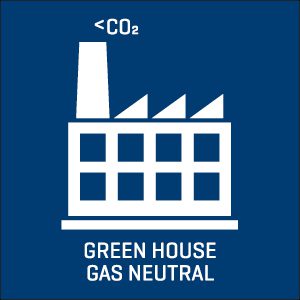
Eliminate or absorb all carbon-based emissions on campus from fossil fuel combustion and decomposing vegetation and waste from campus activities.
Why we’re working towards it:
- Reduce greenhouse gas emissions and air contaminants, as well as costs.
- Increase energy efficiency and add vegetation to sequester carbon.
Steps we’re taking:
- A comprehensive energy and greenhouse gas management program for operations across all five campuses.
- Innovative initiatives across BCIT help lessen emissions: at Aerospace campus, Downtown campus, and Burnaby campus (green roof research, Solar Canopy, AFRESH home).
- Student and staff travel accounts for 36% (28% and 8%) of BCIT’s ecological footprint – transportation initiatives can have a huge impact.
Focuses:
- Manage and assess transportation, energy, and materials demand and utilize alternative fuels, renewable, and “green” energy.
- Preserve habitat and species.
- Optimize space use, adapt and reuse existing buildings and structures.
- Design green buildings and green roofs on a pedestrian-oriented campus.
- Reduce, manage, and convert waste, and adapt purchasing practices.
How we are doing:
- As of 2015, total energy consumption at the Burnaby campus was reduced by 8% since 2001.

Produce carbon-free, on-site heat and power that meets or exceeds needs for campus facilities operations and staff, faculty and student use. Manage energy and materials demand efficiently.
Why we’re working towards it:
- Energy will be produced without health risks in production, use or disposal.
Steps we’re taking:
- At Burnaby campus, our comprehensive energy and greenhouse gas management program includes solar and distributed power projects.
- The Burnaby campus AFRESH home demonstrates photovoltaic and fuel cell distributed electricity generation research.
- The solar canopy on the Burnaby campus demonstrates innovative efficient renewable energy use through design.
Focuses:
- Passive solar gain.
- Renewable energy technologies.
- On-site co-generation of heat and power.
- Distributed and networked systems.
- Energy cascading and waste heat exchange.
- Matching supply quality to need and other energy conservation measures.
- Regular measurement, reduction of consumption, waste and emissions.
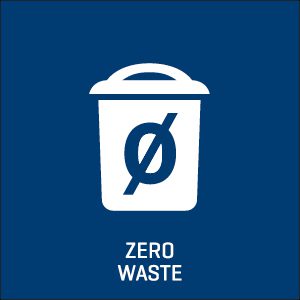
Eliminate or reduce to the maximum possible all wastes associated with campus activities and affiliated facilities and operations. End the use of toxics and persistent pollutants not readily assimilated into the environment on-campus or in the atmosphere, downstream, or in groundwater.
Why we’re working towards it:
- Efficient use of resources and materials and associated cost savings.
Steps we’re taking:
- Composting and recycling programs at Burnaby campus
- Initiatives to reduce toxins, plastic waste, and paper use at Burnaby campus
- Initiatives to use local, sustainable, low-packaging foods, and compost and recycle
- Storm drain marking program to reduce toxins in wastewater at Burnaby campus
Focuses:
- Make purchasing decisions and waste management activities that support eco-industrial networking.
- Manage space demand and facilitate facility and equipment renewal and reuse.
- Use full cost accounting and life-cycle assessment for purchasing, construction, and maintenance.
- Reduce demand for energy and materials through efficiency, renewables and design.
- Reduce emissions through mitigation, then sequestration.
- Pilot Living Building Standard for new buildings, or build to LEED Gold standards or higher.
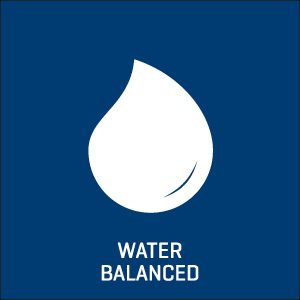
Eliminate storm sewer discharge and reduce or eliminate potable water purchases through rainwater harvesting on-site, and maximize ground water recharge through integrated storm water management.
Why we’re working towards it:
- Increase the quantity and improve the quality of exterior spaces to improve water balance, ecological restoration and biodiversity, carbon sequestration, and human enjoyment.
Steps we’re taking:
- Testing and researching green roofs at the Architectural Ecology Centre, and sustainable campus design features
- Water conservation efforts at Burnaby campus
Focuses:
- Maximization of water conservation and storm water management, through aquifer recharge through landscaping and on-site permeability.
- Rainwater capture and retention; and green roofs, xerescaping, grey water separation and reuse.
- Exploration of use of Eco-san and composting toilet technologies to eliminate black water, as well as solar aquatics and on-site black water remediation technologies.
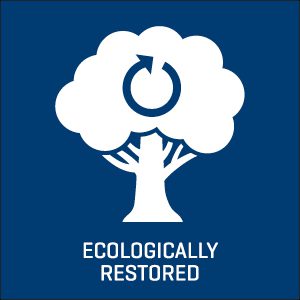
Re-establish full functioning of original ecosystem capacity equivalent to pre-development levels, including number and vitality of habitat and plant and animal species, preserving student and personnel safety.
Provide for species and habitat preservation and restoration in bio-geoclimatic zones off-campus affected by campus-related activities.
Why we’re working towards it:
- Increases the quantity and improves the quality of exterior spaces, improves water balance, ecological restoration and biodiversity, carbon sequestration, and human enjoyment.
- Preserves green space and recovers lost streams through development away from green fields.
Steps we’re taking:
- Initiatives and a new program at Burnaby campus help preserve and restore streams and green spaces
- Sensitive site design at the new ATC campus minimizes ecological disruption
Focuses:
- Landscape naturalization and water-conserving landscaping.
- Daylighting of streams, stream and riparian restoration, nutrient cycling, interpretive signage.
- LEED for BC Sustainable Sites Criteria, ecologically informed purchasing (e.g. certified wood and organic produce), construction, and maintenance.
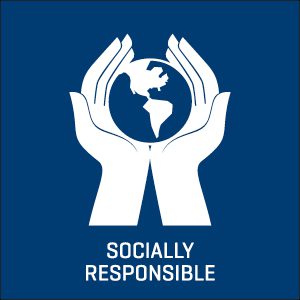
Achieve ethical treatment of and behaviour by students and personnel when making consumer or lifestyle choices.
Offer learning opportunities about full cost accounting and lifecycle assessment in purchasing, construction, and maintenance and operations (including academic/extracurricular activities and healthy work environments).
Why we’re working towards it:
- A greener campus through increased participation in stewardship by faculty and students builds graduates’ knowledge of the issues, skills to face global challenges, and value to employers.
Steps we’re taking:
- Volunteers on Burnaby campus learned how they could help keep toxics out of streams in the storm drain marking program.
Focuses:
- Adoption of a toxic-free, environmentally and socially ethical sustainable purchasing policy, resulting in less energy-intensive products from manufacture and transport.
- Products from renewable resources for reuse, recycling, or biodegrading; and fair worker rights.
- Avoidance of toxics in campus construction, operation and maintenance.
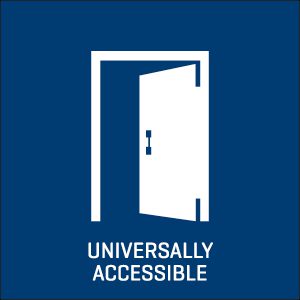
Provide students and personnel opportunities to engage in learning activities and campus greening initiatives that accommodate students’ and personnel’s diverse needs and beliefs.
Why we’re working towards it:
- Increases safety in campus life, affordability of campus and learning-related services, and participation in decision-making.
- Provides opportunities to apply skills and abilities in work and volunteer activities.
Steps we’re taking:
- Creating a compact, pedestrian-oriented campus.
- Increasing stewardship activities for faculty and students in campus greening.
Focuses:
- Affordable housing or information.
- Alternative transport prioritized by least impact.
- Adaptability for religious constraints or other handicaps.
Source: BCIT Greening Campuses Strategic Plan (2007)